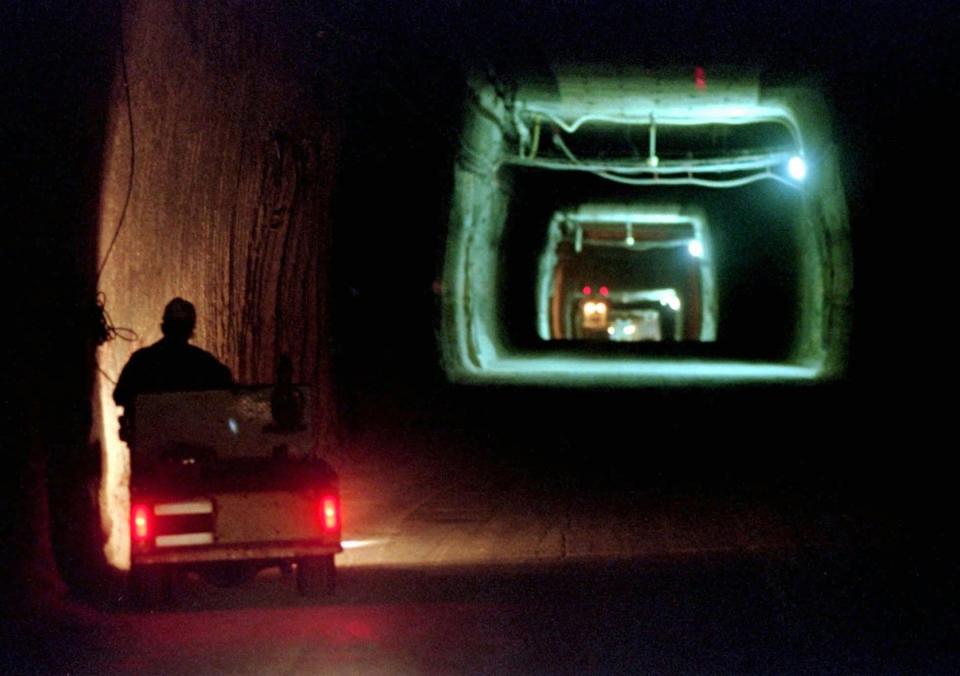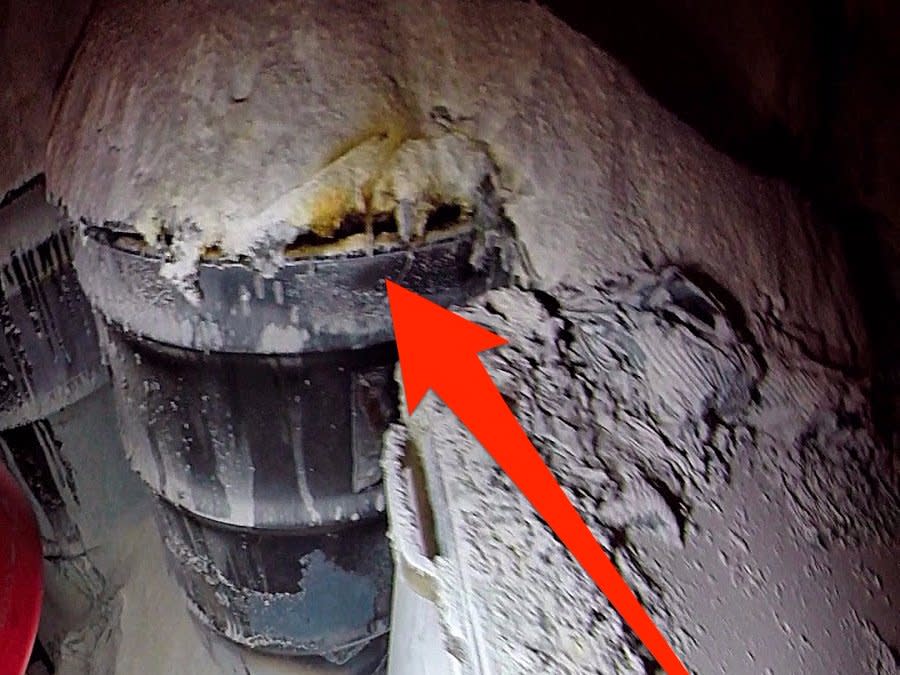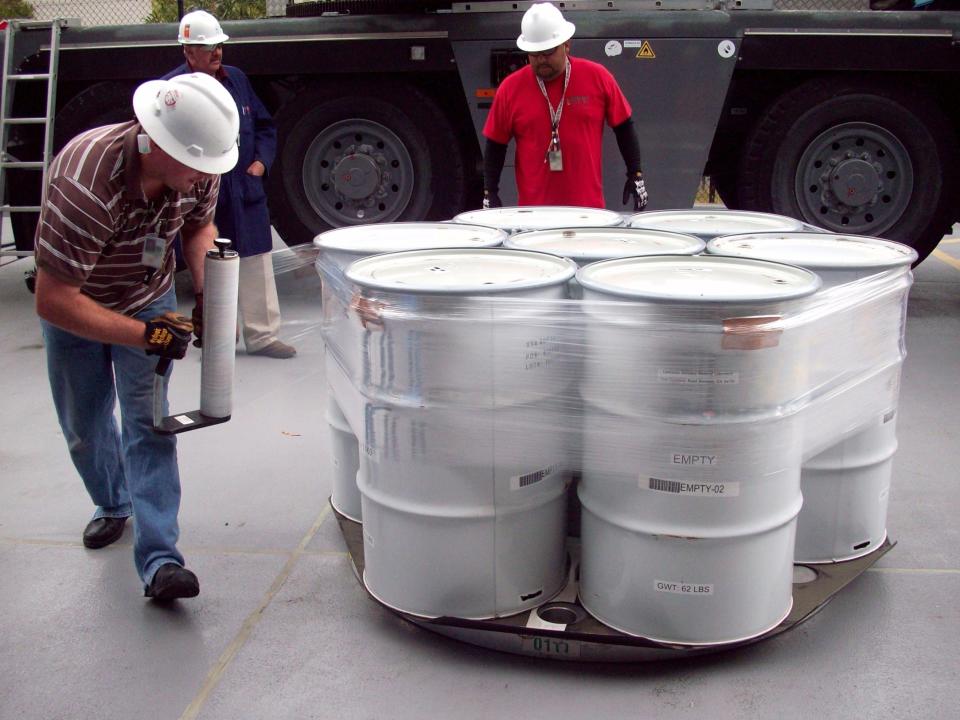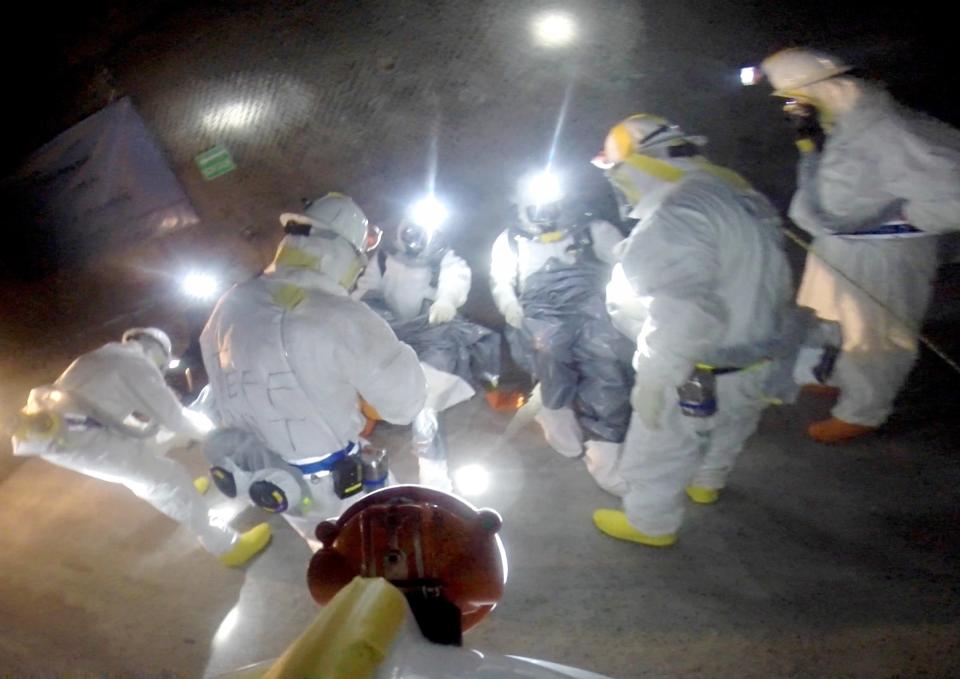A typo and a bag of kitty litter might cost US taxpayers billions in nuclear waste cleanup

Associated Press
A typo and a bag of organic kitty litter may end up costing United States taxpayers more than $2 billion in nuclear waste cleanup, according to a new report by Ralph Vartabedian at the Los Angeles Times.
Back in February 2014, a drum of nuclear waste burst open inside the cavernous Waste Isolation Pilot Project (WIPP), which is drilled out of a salt deposit nearly half a mile below the deserts of Carlsbad, New Mexico.
The US Department of Energy (DOE), which funds the company that runs the nuclear waste dump, quickly suspended operations and launched an investigation to figure out the cause.

Associated PressIn their 277-page report, investigators determined the blast vaporized nearly 7.5 lbs of the material inside a single barrel, labeled "Drum 68660." That material included some radioactive isotopes of americium, plutonium, and uranium — byproducts of Cold War-era nuclear weapons production.
Although no one was inside WIPP when the drum burst, the facility's air ventilation system spread some of the gases outside, exposing 21 workers to low doses of radiation.
Investigators also discovered the trigger of the "thermal runaway event," also known as an "explosion": a dangerous combination of nitric acid and salts, triethanolamine, and "sWheat Scoop" organic kitty litter. (The DOE mentions the brand almost 400 times in its report.)
The cleanup itself will cost hundreds of millions, but that's not where the mishap's ledger ends.
A radioactive kitty litter 'bomb'

Associated Press
The "organic" part of the kitty litter in question is crucial.
That's because wheat, which makes up the pee-absorbing bulk of organic kitty litter, contains plant cellulose that can burn. Standard kitty litter, meanwhile, is inorganic, since it's primarily made of clay.
So when drum-packing workers at Los Alamos National Laboratory (LANL) followed instructions to add an organic variety to soak up radioactive fluids, they were unknowingly packing up what Sarah Zhang at Gizmodo called "the ingredients of a bomb."
Why did they use fancy organic kitty litter instead of plain old clay kitty litter?
According to a Nov. 2014 story by Patrick Malone at the Sante Fe New Mexican, which we first learned about in Gizmodo's detailing of events, it was likely the most common and mundane of human errors — a typo:
"Even before the waste was treated at Los Alamos, mistakes had been made that could have been instrumental in causing the accident at WIPP. Emails between WIPP contractors involved in the leak investigation indicate that something as simple as a typographical error in a revision of LANL's procedural manual for processing waste containing nitrate salts may have precipitated a switch from inorganic clay kitty litter to the organic variety."
A Sept. 2014 report released by the DOE appears to back this up, stating "handwritten notes that called for an organic absorbent to process nitrate salt drums were improperly relied upon to revise the Procedure".
Expanding cleanup costs

Associated Press
Whether handwritten or typed, that error is going to be costly.
According to Vartabedian at the LA Times, the cleanup costs directly related to Drum 68660 will be about $640 million, per a July 2016 contract modification with the Nuclear Waste Partnership (the company that runs WIPP for the DOE).
Further, he wrote, this "does not include the complete replacement of the contaminated ventilation system or any future costs of operating the mine longer than originally planned."
The DOE disputed that cost figure with Business Insider, saying direct cleanup costs will be about $244 million — not $640 million.

Associated PressThat extra money in the larger figure, it says, comes from a new two-project air ventilation system for WIPP. Together those (very expensive) projects may cost between $270 million and $398 million. But the DOE told us approval wasn't entirely tied to the mishap.
"[T]he two ventilation system capital asset projects are needed as a result of a general evaluation of WIPP infrastructure upgrades and partially the event," a DOE spokesperson told Business Insider in an email (our emphasis added).
Whatever the case, WIPP isn't entombing any nuclear waste while cleanup work continues — which means the US government's grand scheme to seal it all up has a major wrench in its gears.
The Times reports the facility may need 7 years of additional operation to handle the backup of waste. At $200 million per year, according to the Times' analysis, that could add up to $1.4 billion in extra costs triggered by the mishap.
The DOE did not immediately dispute that length of time, but said it anticipates WIPP could resume taking in — or "emplacing" — new drums of waste sometime in 2017.
"DOE can resume waste emplacement without the new permanent ventilation system," the spokesperson said.
In the meantime, the DOE might also have to pay temporary storage and inspection costs for all of the waste that WIPP can't entomb until the cleanup work is finished. The DOE couldn't confirm or deny this, nor the cost.
"The Waste Isolation Pilot Plant (WIPP) is critical to the Department of Energy's mission to cleanup nuclear waste generated by atomic energy activities," the spokesperson said. "WIPP is the nation's only repository for the disposal of nuclear waste known as transuranic (TRU) waste. The Department is committed to the recovery, and resumption of TRU disposal operations at WIPP when it is safe to do so."
Business Insider contacted sWheat Scoop for comment, but the company did not immediately respond.
NOW WATCH: Reindeer are strangely radioactive 30 years after Chernobyl
See Also:

 Yahoo Finance
Yahoo Finance 
